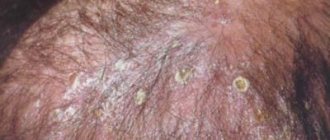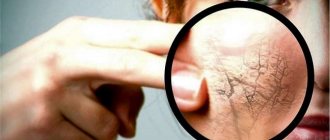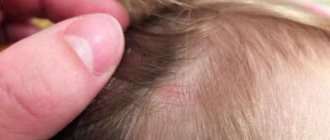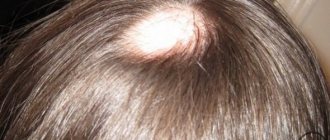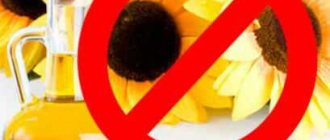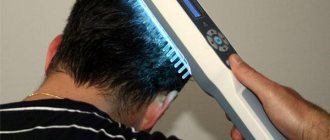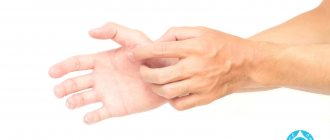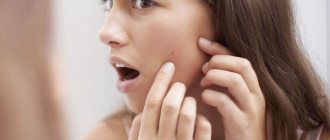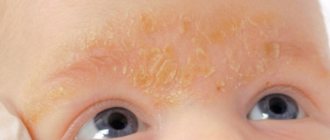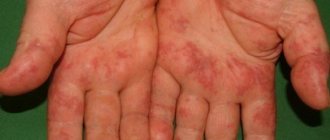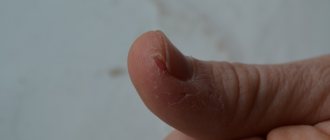In men, it is much easier to notice the first signs of redness of the scalp, since they usually wear short hair. If you find red spots under your hair, you should definitely consult a doctor. A specialist can accurately identify the causes and prescribe the necessary treatment.
You should not immediately panic, although the appearance of redness usually indicates various disorders. Therefore, even if you are not bothered by itching and sores, but there are red spots, you still need to see a doctor. As a rule, redness of the skin indicates systemic disorders. It is better not to establish the causes yourself and not to self-medicate, otherwise this can only aggravate the condition.
Seborrheic dermatitis
One of the most common causes of redness of the scalp is seborrheic dermatitis. The disease occurs as a result of hyperfunction of the sebaceous glands and the active influence of opportunistic microbes Pitirosporum orbiculare and Pityrosporum ovale from the genus Malassezia.
It has been proven that the activity of these fungi occurs during endocrine and immune disruptions, as well as during regular stress and psychosis. Factors such as sweating and exposure to alkaline detergents can also activate the process of hyperdevelopment of fungal microflora.
Damage to the scalp occurs gradually and manifests itself in the initial stages with itching and redness. Red spots are accompanied by the appearance of plaques in the form of yellow-pink scales. Often these symptoms are accompanied by weeping areas. Sores and sticky crusts appear.
The scalp begins to peel off intensively, and the hair becomes thinner. If seborrheic dermatitis is not treated promptly, this process will lead to baldness and a chronic form of the disease.
Since at the moment there are no medications that can normalize the function of the sebaceous glands, treatment is primarily aimed at eliminating symptoms.
If the cause of redness of the scalp is seborrheic dermatitis, use special shampoos based on ketoconazole, ciclopirox or zinc and tar pyrithione. The action of these components is aimed at suppressing fungal microflora.
Therapeutic shampoos for seborrheic dermatitis:
- Friderm-tar;
- Head and shoulders;
- Friederm-zinc.
During the period of exacerbation of the disease, such shampoos are used every day. If the effect of one of the remedies weakens, it is alternated with another. Doctors recommend using shampoo containing two components simultaneously: ketonazole and zinc pyriotine. This combination allows you to quickly reduce redness, itching, relieve swelling and start a faster regeneration process.
Therapeutic shampoo is combined with the use of therapeutic and prophylactic agents. These include 2% Sulsen paste. It is applied immediately after using shampoo.
During the period of remission, 1% Sulsen paste is used as maintenance therapy.
How to get rid of red spots on your head
The most common cause of red spots on the forehead is seborrhea (after parasites). This is a fungal skin disease that is very difficult to treat. Below are the most effective methods for getting rid of seborrhea.
Use of antifungals
Remember that self-medication with antifungal drugs is the right path to hospitalization. They are very toxic and can lead to hepatitis, severe poisoning, hearing and vision loss. They should never be taken by people with the following diseases:
- Kidney and liver failure.
- Oncology.
- Leukopenia, leukemia, anemia, thrombocytopenia.
- Metabolic disorder (acidosis).
- Pathologies of the heart and blood vessels.
Also, do not experiment with taking medications. In no case should you take antibiotics at the same time as antimycotic drugs. Their toxic effect can cause catastrophic consequences, such as liver breakdown.
Allergic reaction
Redness of the scalp is often caused by an allergic reaction to an external irritant.
Products that can cause scalp irritation include:
- hair dye;
- shampoos;
- foam, hair sprays;
- chlorinated water.
The appearance of redness and itching of the scalp immediately after application of the product helps to quickly identify the allergen. If the symptoms after use are mild, then it will not be possible to immediately determine the irritant. Therefore, it is very important when using hair care products to first test them on the wrist or behind the ear, where the skin is very sensitive.
If immediately after using the product, itching, burning and redness of the skin appears, it is necessary to wash off the irritant with water as quickly as possible without using any shampoos and take an antihistamine. After this, you should consult a dermatologist.
Treatment
Many people consider redness under the hair and itching not such a serious problem and try to cope with the disease on their own, while missing the moment when the disease can be cured with little effort.
If unpleasant symptoms appear, you need to consult a trichologist or dermatologist, only they will be able to correctly assess the situation and prescribe competent treatment.
As we mentioned earlier, doing it on your own instead of treatment will not bring any benefit, and may also provoke an allergic response from the body.
Ringworm
A contagious disease such as ringworm can also cause redness of the scalp. Its appearance is provoked by fungi of the genus Microsporum and Trichophyton.
Infection occurs through contact with a sick person or animal. Children aged 4 to 15 years are primarily at risk. People with weakened immune systems are also susceptible to the disease.
The main symptoms of ringworm:
- the appearance of large red plaques on the scalp;
- formation of lesions with thinning hair;
- hair breaking;
- peeling and scaling;
- sometimes itching of the affected areas.
Treatment should be prescribed exclusively by a dermatologist. Treatment of ringworm requires an integrated approach. It includes the use of topical and oral medications.
The patient is prescribed sprays and shampoos containing ketoconazole, terbinafine, mycoseptin and micoconazole. The antibiotic griseofulvin, which has an antifungal effect, is prescribed for oral administration. In addition, the patient needs to take a complex of vitamins and immunomodulators.
Prevention measures
When treating redness on the scalp under the hair with medication, do not forget about preventive measures.
Even if the disease has already begun to progress and therapeutic treatment is prescribed, preventive measures will help to achieve a positive result faster:
- Balance your diet by including foods rich in vitamins and microelements. Eliminate fatty and spicy foods, give up processed foods.
- Start using natural hair care products. Try not to use styling foams, sprays and varnishes - they can severely irritate the scalp.
- Reduce the load on your body, try to avoid stressful situations, look at the world with a smile.
- Start spending more time in nature, play outdoor sports.
- When dyeing your hair, use gentle ingredients, it is better if they are natural.
These tips will not cure the disease, but will help speed up your recovery time.
Psoriasis
Redness of the scalp can be caused by a serious disease such as psoriasis. It can appear both on the scalp and on other areas of the skin. The main location of red plaques in psoriasis is the back of the head. The affected area becomes covered with scales that resemble dandruff. The patient usually experiences severe itching. The disease can lead to partial baldness. To determine scalp psoriasis, differential diagnosis is necessary to exclude diseases with similar symptoms (ringworm, seborrheic dermatitis, pityriasis).
This disease is very difficult to treat and requires long-term therapy. To date, there are no drugs that can completely cure psoriasis. Treatment is primarily aimed at eliminating symptoms and reducing the course of the disease. The following agents are used as therapy:
- medicines;
- phototherapy.
Oral medications are used only in severe cases of the disease or if psoriasis has affected other areas in addition to the scalp. For mild forms, light therapy or phototherapy is used, as well as medicated shampoos and local preparations, which should include one or more of the following components:
- anthralin;
- tar;
- corticosteroids;
- vitamin D;
- salicylic acid;
- topical retinoids.
You should not prescribe treatment on your own, as this is fraught with complications and the development of a chronic form of the disease.
Redness: what is the reason?
In order to understand how to get rid of redness under the hair, you need to understand why it appears.
But if you have been washing your hair with this shampoo for a while and have not had any problems before, then most likely the reason is different. One can, of course, assume that when using the balm, the head was not washed well.
This is an unpleasant cause, but it is easy to diagnose. Each disease has several specific symptoms:
- If, upon examination of the hair and the skin underneath, it is discovered that the hair at the roots is very oily, and when combing a lot of dandruff flies, then it may be seborrhea.
If, in addition to dandruff and redness, inflammation, white spots, or worse, purulent pimples are observed on the skin, this is a skin disease (psoriasis, dermatitis, lichen).- If itching is the only symptom, then it may be scoliosis or subcutaneous mites. If you can determine the presence of lice yourself by combing your hair with a comb, then only a trichologist can see mites, since they are impossible to see with the naked eye.
Disturbances in the functioning of internal organs can cause itching of the scalp, for example:
- avitaminosis;
- hormonal imbalance;
- diabetes;
- heart failure;
- diseases of the stomach and intestines.
Before dyeing your hair, you should do an allergy test - this is written on all packaging with the product. If after dyeing there is itching, and after a while dandruff and red sores appear on the scalp, then it is likely that you are allergic to the dye composition.
In this case, one thing clings to another, the itching irritates the person, aggravating his moral and mental state - stress increases and the situation worsens.
Pitiriaz
Redness of the scalp can cause a rare disease called pityriasis. The cause of its occurrence is a scalp fungus, which is present in small quantities in all people. Pathological proliferation of the fungus is facilitated by hormonal imbalances in the body and immunodeficiency.
The main symptoms of the disease are the appearance of red-orange spots on the scalp. Over time, the fungus affects the face and other parts of the body. In addition to the appearance of plaques, pityriasis is characterized by the formation of crusts and cracks in the affected area.
Treatment includes diet therapy and the use of local remedies in the form of sea buckthorn or St. John's wort oil, as well as the drugs romazulan or sanviritrin.
If symptoms such as redness and itching of the scalp appear, you should immediately consult a dermatologist, rather than self-diagnose and prescribe treatment.
First aid
Before deciding what medications to take when red spots and itching appear on the scalp, you need to identify the cause of their appearance, but it is rarely possible to make a correct diagnosis on your own. Let's look at the most common causes of this phenomenon.
How to help yourself in this situation:
- The spots appeared after changing hygiene products, you just need to wash your hair with your usual shampoo, rinse well and apply a mask of burdock oil for 1 hour. This drug well moisturizes, nourishes and soothes the scalp, while making hair healthy along its entire length.
- The spots are accompanied by itching and appeared after dyeing - an allergy to the dye composition. In this situation, it is enough to take a tablet of Suprastin or Diazolin and smear your head with Bepanten ointment, which relieves redness and itching.
- The cause of the redness was a stressful situation, consult a doctor, or take a sedative yourself. This could be a decoction of valerian, or licorice extract. As soon as your nervous system calms down, the redness will disappear on its own.
Look at the photo of what the spots under the hair look like:
The reason for this may be seborrheic dermatitis, the first signs of which most people ignore. As a result, the moment is missed, and the disease progresses to the next stage with aggravating symptoms:
- Severe itching both in certain areas of the head under the hair and throughout the entire area.
- The appearance of red spots.
- The scalp becomes oily.
- Hair loss begins.
The spots grow quickly, causing unbearable itching and a burning sensation. In especially severe cases, seborrhea is accompanied by an infectious disease. This problem begins to bring discomfort to a person - a stressful situation appears, which aggravates the course of the disease.
Seborrhea can only be cured comprehensively.
- The first stage is the use of antifungal shampoos, sprays, lotions (Sulsena, Nizoral, Sebazon) - sold at the pharmacy, no prescription needed.
- The second stage is taking medications with zinc.
- Exfoliating compositions can be an auxiliary treatment.
There could be several reasons for this problem:
Physiological causes of rash, urticaria, scabies due to nerves
In order for a person to feel itching, the motor, affective and sensory areas in his brain must simultaneously be activated, which will form the corresponding sensation. Therefore, any scabies may always have a mental component.
People experiencing psychogenic itch constantly irritate their skin. Scratching provides temporary relief. But it activates central and peripheral sensitivity, reducing the threshold for the perception of unpleasant sensations.
When scratching, inflammatory mediators are released in the skin, which increase peripheral sensitivity. When inflammation becomes chronic, it accelerates signal transmission through the spinal cord and enhances its processing in the brain. Central sensitization occurs.
The habit of psychogenic itching is always formed through a vicious feedback circle.
- There is a desire to scratch.
- The person itches and feels some relief.
- Positive reinforcement is triggered - if you scratch yourself, it becomes easier.
- But scratching provides only short-term relief. But in fact, it only intensifies the itching, as it exacerbates central and peripheral sensitivity to irritants of this kind.
- As the sensitivity has increased, you want to itch even more. Combing again provides short-term relief and again forms positive reinforcement for this action. And so on ad infinitum.
Epicondylitis medial
The disease is similar to lateral epicondylitis. Again, despite the name golfer's elbow, medial epicondylitis is often seen in those who have nothing to do with golf. Characteristic features: pain is felt around the articular joint and is especially severe on the inside.
Treatment can be prescribed in the form of:
- NSAIDs (ibuprofen);
- cortisone injections;
- physiotherapy;
- electrical stimulation;
- extracorporeal shock wave therapy;
- iontophoresis;
- load correction during vigorous activity.
Surgical treatments include removing dead tendon tissue and re-suturing the tendon.
Traditional medicine recipes
The following folk methods will help relieve itching and redness due to allergies:
- dilute 1 tbsp with a glass of warm water. l. baking soda, moisten a sterile cloth with the solution and apply lotions or wipe the affected areas;
- 1 tsp. steam the strings 0.5 tbsp. boiling water, leave for 15 minutes, use up to 10 r/day;
- 1 tbsp. l. pour crushed celandine into a glass of water, boil and keep on low heat for 10 minutes, treat the affected areas with the solution up to 7 times a day;
- Mix beet juice with apple cider vinegar (1:1), soak a napkin in the resulting solution, use for compresses or lotions 2 times a day;
- Mix olive oil and lemon juice (2:1), lubricate the affected areas with the mixture 3 times a day.
The following recipes fight fungal infections:
- For skin. Mix 1-2 cloves of garlic with 1 tsp. butter. Lubricate the affected areas with the resulting mixture before going to bed, covering with a cloth.
- For the head. Mix shampoo with a small amount of coffee, apply to hair, rinse. Use 2-3 times a week.
- For oral administration. Steam 50 g of a herbal mixture of yarrow, wormwood, plantain and burdock, taken in equal volumes, in 500 ml of boiling water for 30 minutes. Treatment: 1 tbsp. drink in the morning on an empty stomach.
To relieve emotional stress and relieve anxiety, it is recommended to drink tea from medicinal herbs - chamomile, mint, St. John's wort, oregano, sage:
- 1.5 tsp. steam chamomile inflorescences with a glass of boiling water, leave for 15 minutes, drink 0.5 tbsp. 3 times a day (the drink must be warm);
- 2 tbsp. pour 60 g of lemon balm with hot water, leave for 2 hours, take 100 ml 3 times a day;
- steam chamomile and valerian (3:2) in a thermos for 12 hours, drink 0.5 tbsp. for the night.
Irritation on the skin, redness causes discomfort, itching, and prevents you from concentrating not only on the important, but also on the completely mundane. Properly selected treatment will help cope with this problem and restore the joy of life.
Article design: Mila Friedan
Infectious diseases
Micro-wounds on the feet and legs often do not attract human attention. “It will go away on its own” - the conclusion is drawn
After some time, a problem appears that cannot be ignored, because an infectious process has developed.
- This is how erysipelas can begin, caused by the penetration of streptococci into the deep layers of the skin. In this case, the person will be bothered by redness on the leg, and everything around the source of inflammation will itch. There is also a deterioration in general health.
- In case of insufficient skin hygiene, as well as in the case of reduced immunity, fungal spores can penetrate the natural barrier of the epidermis. In this case, mycosis of the skin develops. The favorite place of these parasites is areas where it is always warm and humid, i.e. interdigital spaces of the foot. In these places you can see peeling of the skin, soaking of the epidermis, cracks, and ulcers.
- Ticks are another enemy that doesn't mind settling on our skin and parasitizing on it, causing irritation and severe itching on the legs. You can understand that a scabies infection has occurred not only by the fact that you constantly want to scratch the affected areas, but also by the pimples that merge with each other into one stripe.
Removal using traditional methods
You don't have to go to a salon to remove blemishes from your skin. Using available folk remedies, you can prepare decoctions, lotions and masks to restore the skin.
Herbal infusions
Medicinal herbs are used to prepare decoctions. Chamomile and calendula have a calming and anti-inflammatory effect. A decoction of parsley, sage, birch buds, linden blossom, mint, oak bark and other plant components with a similar effect is also suitable.
Preparing the decoction will not take much time. You need to pour two tablespoons of herbs with a glass of hot water and leave for 30 minutes. Wipe 3-5 times a day.
The effect of the decoction will be more pronounced if you make lotions. Compresses based on black bread are especially effective. You need to soak fresh bread in the broth so that it softens slightly. Then apply to problem areas and leave for 15-20 minutes. After the time has passed, remove the lotions and cleanse the skin of any residue.
Masks for rough spots
The use of masks speeds up the skin healing process. Apply once every 2-3 days until complete recovery. If there is severe redness, you can do it every other day. Keep on the skin for no more than 10 minutes.
Oatmeal.
Mix 1 tbsp. spoon of oatmeal, 2 tbsp. spoons of kefir and 1 teaspoon of honey. Avoid honey if you have allergies.
Cottage cheese.
Mix 3 tbsp. spoons of cottage cheese, 1 teaspoon of honey and 1 teaspoon of lemon juice.
Sour cream.
Mix sour cream and honey in equal proportions. 1-2 tablespoons of each component is enough.
Potato.
Mix 1 teaspoon of sour cream and 1 tbsp. a spoonful of raw grated potatoes.
From parsley.
Pour half a glass of boiling water and add 3 tbsp. spoons of chopped parsley. Leave for 60 minutes. After time, mix with 0.5-1 cup of sour cream. The mixture should be thick.
From the yolk.
Finely grate one boiled yolk and add 2 teaspoons of lemon juice.
Clay.
Mix 2 tbsp. spoons of white clay, 2 teaspoons of lemon pulp and 1 tbsp. spoon of olive oil.
With baby cream.
Mix 1 tbsp. a spoonful of baby cream, 1 teaspoon of chamomile tincture and 1 teaspoon of olive oil.
Diet and drinking plenty of fluids
During treatment you will have to give up unhealthy and heavy foods. The following are included in the blacklist:
- fatty and fried;
- sweet;
- peppery, salty, hot, spicy;
- fast food;
- canned foods;
- semi-finished products;
- carbonated drinks;
- alcoholic drinks.
Instead, give preference to stewed and steamed dishes. Also drink plenty of water to speed up the elimination of toxins.
Hygiene
It is necessary to thoroughly cleanse the skin in the morning and evening, especially from cosmetics. Try to wash your face not with water, but with tonic. Hard water can increase irritation.
It is also necessary to change pillowcases every 1-2 days or wrap the pillow in a clean towel daily. Try not to touch your face with your hands. The same applies to the mobile phone screen and other surfaces.

